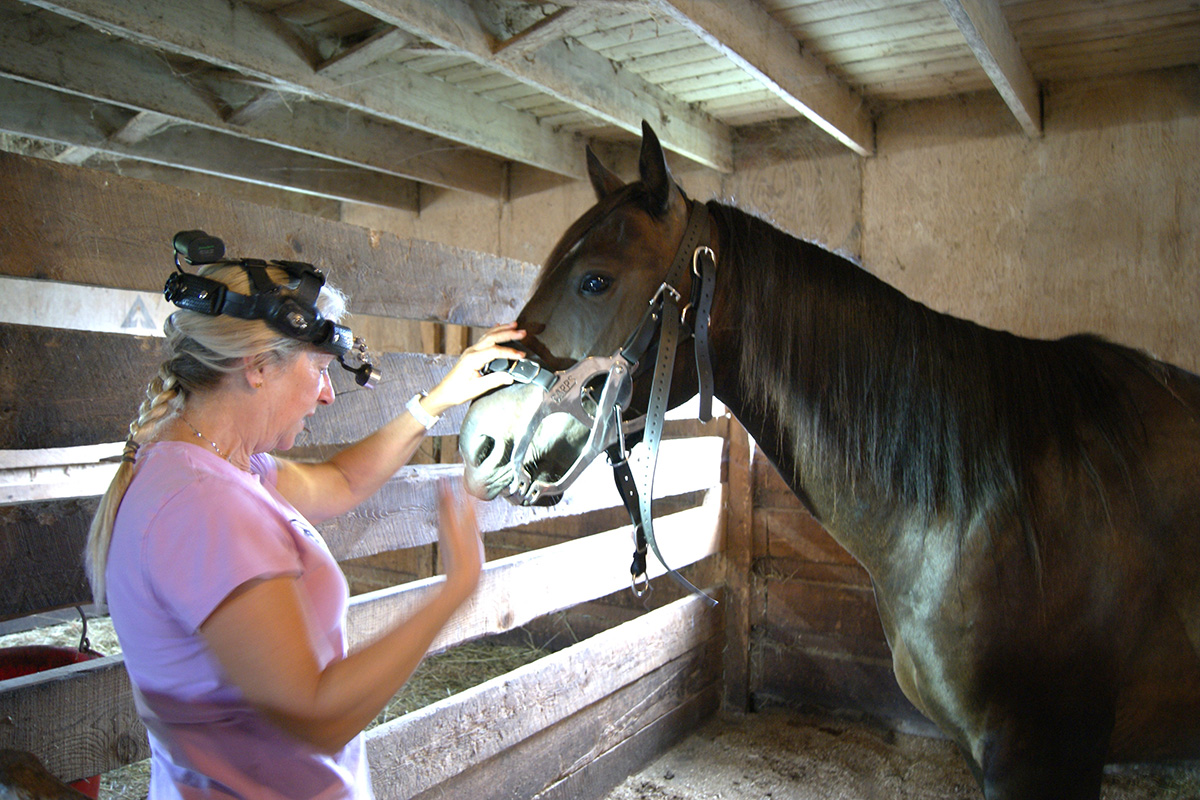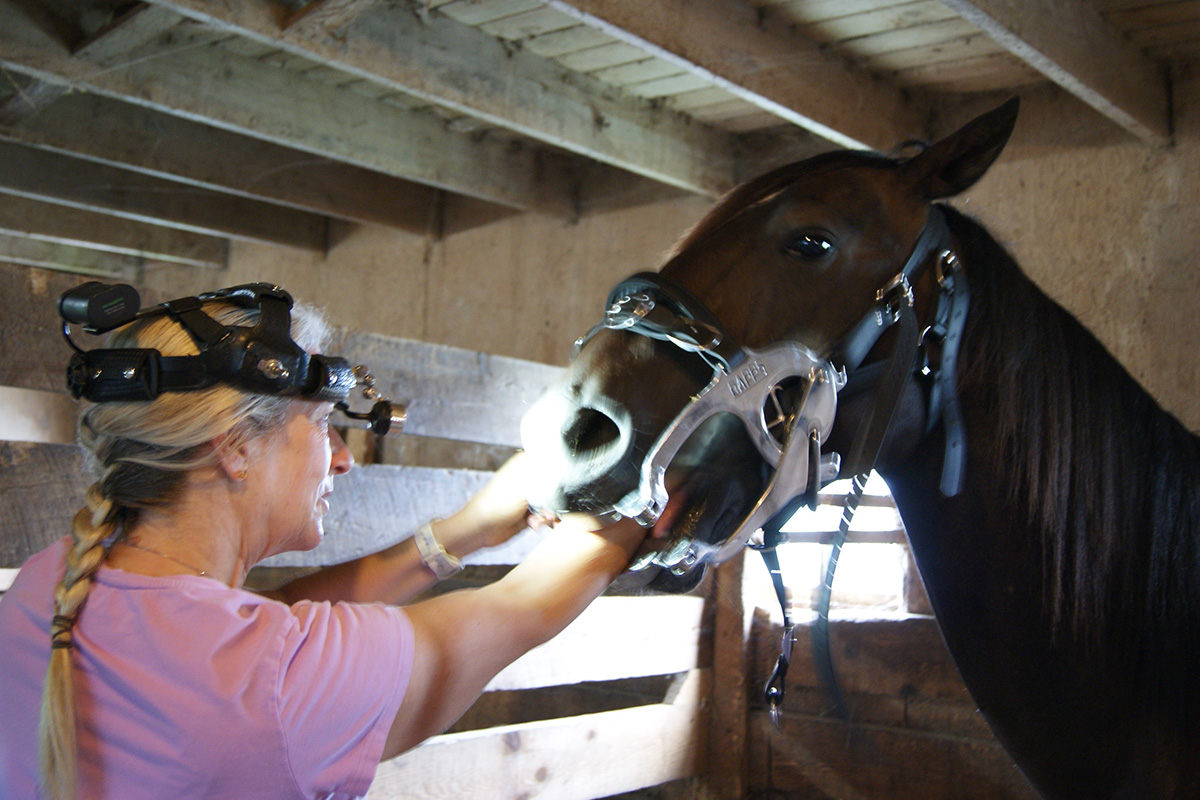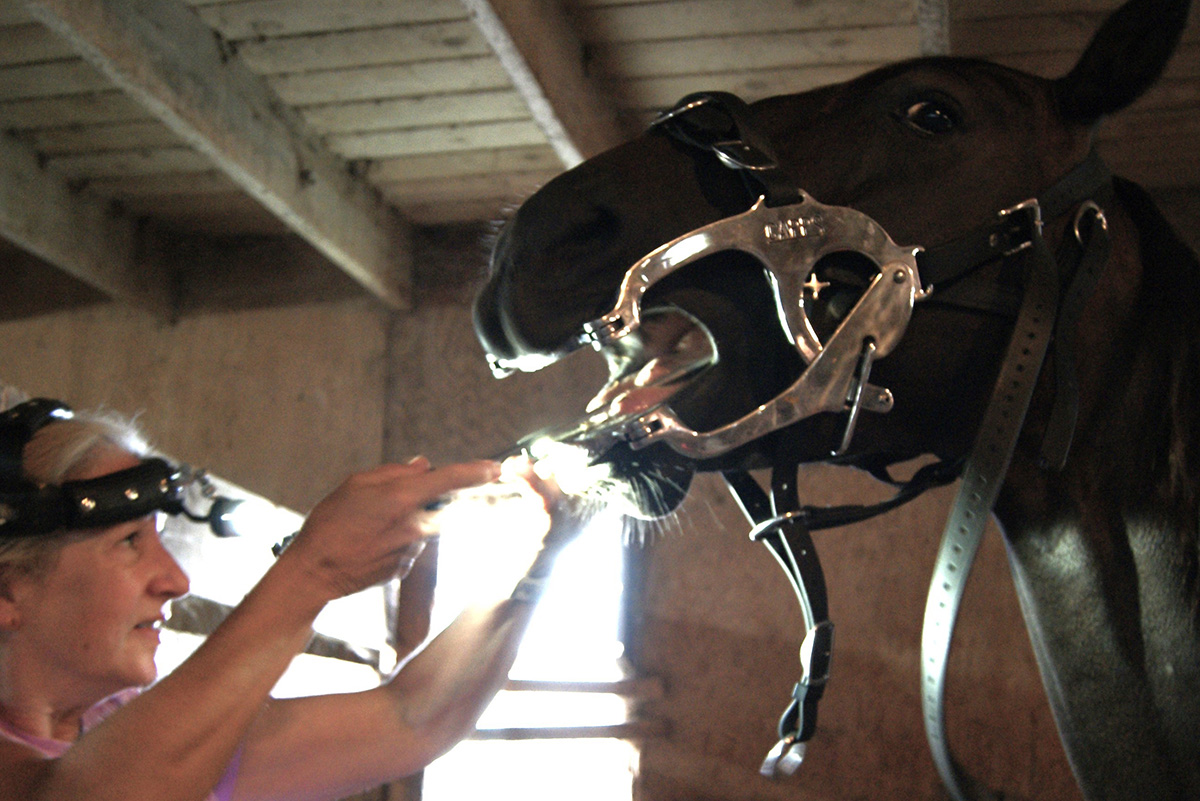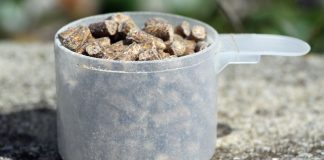
There are some things you can put off doing—I really should reorganize the tack room—and then there are things that require scheduling routine maintenance—I need to replace the tires on the trailer before show season. One thing that you can’t afford to leave to chance is scheduling regular dental examinations for your horse. If not made a priority, it can lead to pain, behavioral issues, poor performance, and worse.
Common Equine Dental Problems
A few of the most common dental problems include:
◆ Lost, broken, or infected teeth (or gum disease)
◆ Sharp enamel points on their cheek teeth (impedes chewing, causing cuts and ulcers on the cheek and tongue)
◆ Hooks (overgrowths) on the upper and lower cheek teeth (can cut into the gum of the lower jaw)
◆ Retained caps (deciduous teeth/baby teeth)
◆ Abnormally long and/or sharp canine teeth (makes inserting/removing the bit difficult)
Dental problems in a horse can emerge at any point in their life. Thus, regular exams are needed to prevent and treat oral issues. And when it’s time to take a peek in your new horse’s mouth, an equine dental technician is equipped to do just that.
What to Look for in Your New Horse’s Mouth
Mary Deane, EqDT, an equine dental technician and member of the International Association of Equine Dentistry (IAED) and the Equine Dental Providers of America (EDPA), is an avid horsewoman and actively educates other riders on why scheduling routine dental exams is vital to maintaining a healthy and happy horse.
Mary recommends yearly exams “to start between the ages of 2 to 4.” Foals can be checked for congenital abnormalities and yearlings can benefit from floating as teeth develop sharp points. The key is not to put routine exams off for many years thinking the horse isn’t an “adult” yet. The baby teeth (deciduous teeth) are temporary; around age 2 ½ they begin to be replaced with adult teeth.
Mary explains that as the horse ages, “the opposing tooth erupts, causing the teeth to grow unevenly. Filing and balancing the teeth yearly will even out the occlusal surface.” Performance and age are factors in how often an exam should be done. Mary states: “A lot of show or racing horse owners will have them done twice a year. For riding or pasture horses, once a year is recommended.”
When performing a dental exam on a client’s new horse—or her new horse, One Four F—Mary describes what she’s looking for. “The first thing I do is assess the horse overall, including the head, body, and feet.” She asks about the horse’s diet and how often they are ridden. She uses an equine dental halter and speculum to examine “the horse’s gums, the incisors, check the grind of the teeth, and look for the angle of the incisors.” She rinses the mouth to clear out any remaining food. She smells for infections, looks for abnormalities in or around the mouth, and checks for wolf teeth (small teeth located in front of the second premolar) or any supernumerary teeth (extra teeth).

Mary examines the occlusal surface of the molars, looking for sharp points or hooks by running her fingers over every single tooth. Mary explains, “You can see more with your hands by feeling than you visually can.” She will then float the horse’s teeth using hand float blades (files). Floating removes sharp enamel points, and smooths down rough surfaces by filing, ensuring the teeth are balanced and come together evenly with equal pressure. After floating, she uses her fingers to recheck, making sure she doesn’t miss anything. Mary is keenly attuned to the horse’s comfort, offering soothing words, affectionate head caresses, and works with a gentle touch. She says, “I’ll work for a while and then I’ll give them a break.”

If at any point her exam reveals a nasty smell indicative of infection, an abscess, broken teeth, or she feels the horse should be sedated for comfort and safety reasons, Mary will stop. She will tell the owner to seek the expertise of a veterinarian. “The horse may need extractions, be prescribed antibiotics, or require sedation.” (In Maine—like many states—only a veterinarian can administer sedation.)
Equine dental technicians are not veterinarians; their scope of work varies as state laws govern it. However, they play a huge role in educating owners on the importance of preventative dental care. And they work collaboratively with veterinarians to improve horses’ lives.
Dr. Stacy Anderson, DVM, MVSc, PhD, Dean of Lincoln Memorial University’s Richard A. Gillespie College of Veterinary Medicine, says, “Equine veterinarians must begin to allow veterinary technicians (or nurses) to practice to the top of their licenses to improve practice efficiency and meet the demands of equine clients. In many states, veterinary technicians are allowed to provide routine dental care as written in practice acts… With the shortage of equine practitioners impacting the ability to provide care to all equine patients, the industry needs to take a closer look at how leveraging a credentialed veterinary technician or nurse could positively impact their practice and allow them to better service their clients.”
The Rewards of Working as an Equine Dental Technician
Although her work as an equine dental technician is physically demanding and stressful at times, Mary finds immense satisfaction in being able to help a horse and its owner uncover and treat a source of pain. She says: “What I love most about my job is being able to observe the beautiful connection between the horse and rider.” Working with horses fulfills a lifelong goal. “When I was a little girl, I had one Barbie and about five play horses; I dreamt for the day I could have my own real horse. It didn’t happen until I was in my 30’s, and I’ve loved every second since of being a horse owner!”
4 Signs Your Horse Needs a Dental Exam1. Suddenly not eating hay or grain, dropping feed. This could indicate loose or fractured teeth, malocclusions, periodontal disease, or masses in the mouth. |
This article about horse dental care from the perspective of an equine dental technician is a web exclusive for Horse Illustrated magazine. Click here to subscribe!





